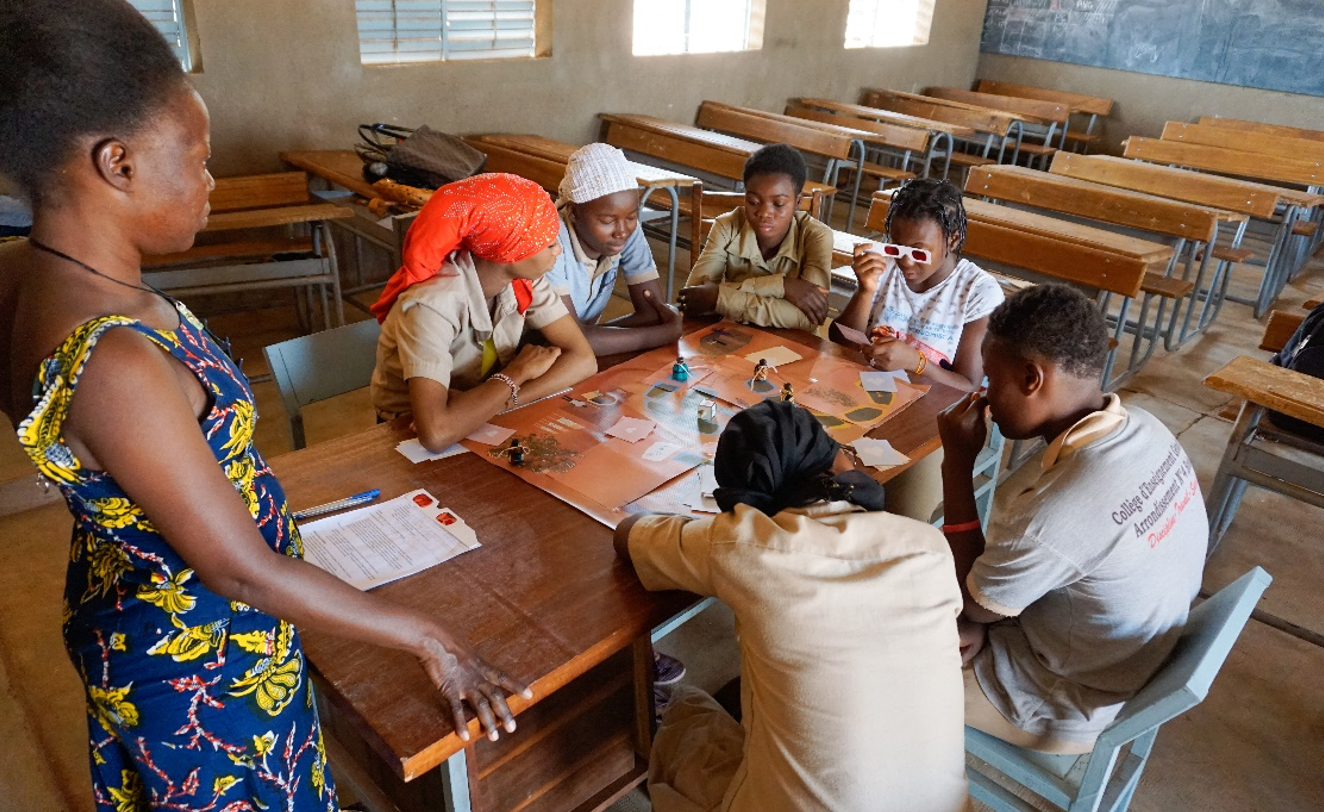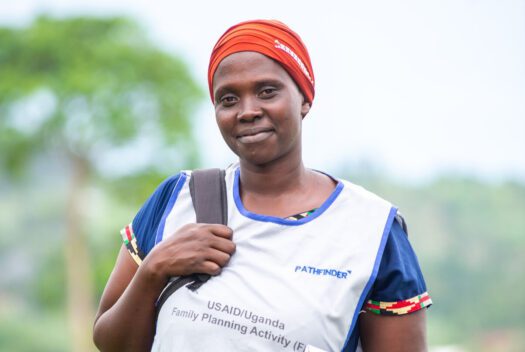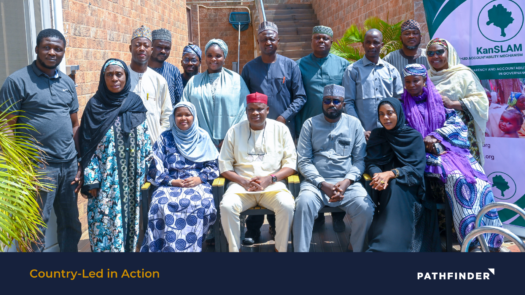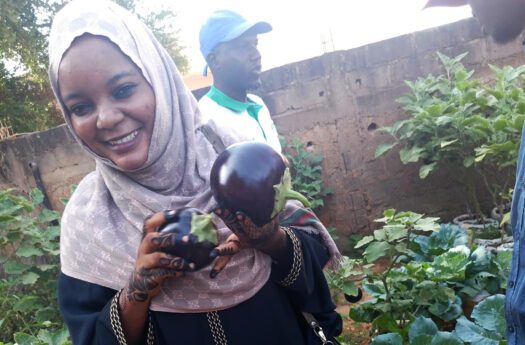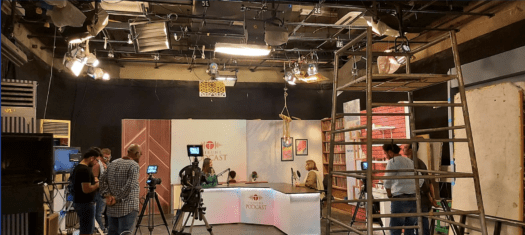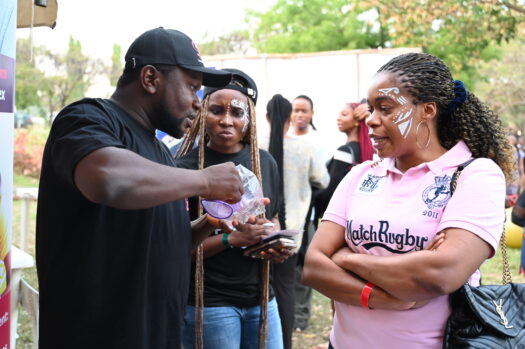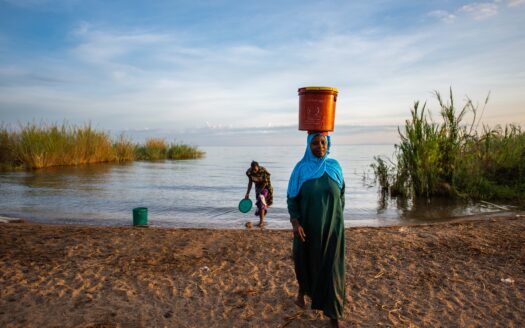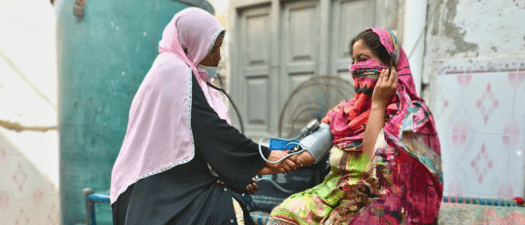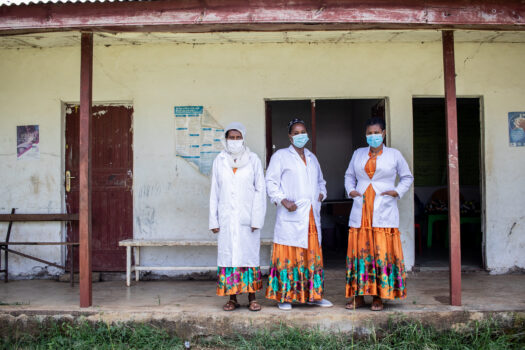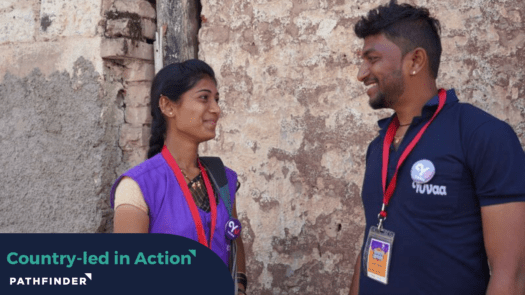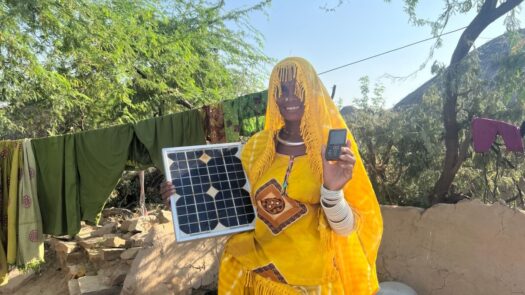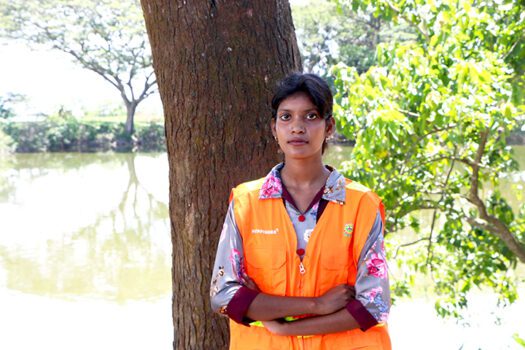When you think about reproductive health and rights, you don’t necessarily think about art.
But Pathfinder’s unique (re)solve project has sought to approach reproductive health through a multi-faceted lens, thinking strategically every step of the way about how each puzzle piece fits together and how each piece forms effective solutions that support women and girls to make informed decisions about using contraception.
In Burkina Faso, this meant thinking through design elements, and developing a stunning board game, La Chance, and a series of visual behavioral solutions (passports, posters, and ID tags or name tags) that supported unmarried girls to realize risks associated with unplanned pregnancies and use contraception if they were sexually active.
These solutions were not random. The design shifted significantly as the project evolved. The behavioral science-backed design went through several iterations based on data and feedback from our team in Burkina Faso, frontline health workers (FHWs), and adolescent girls on the general concepts, content, format, acceptability, and perceived effectiveness of the prototypes.
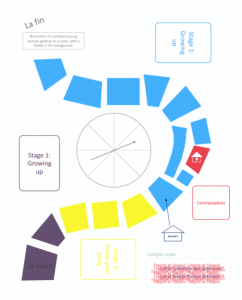
The art design process started with giving a designer the prototype tested in local schools in Burkina Faso. The designer then researched indigenous patterns used in Burkina Faso to incorporate into the design of the game.
Incorporating some of these patterns resulted in an early draft sketch of the board game.
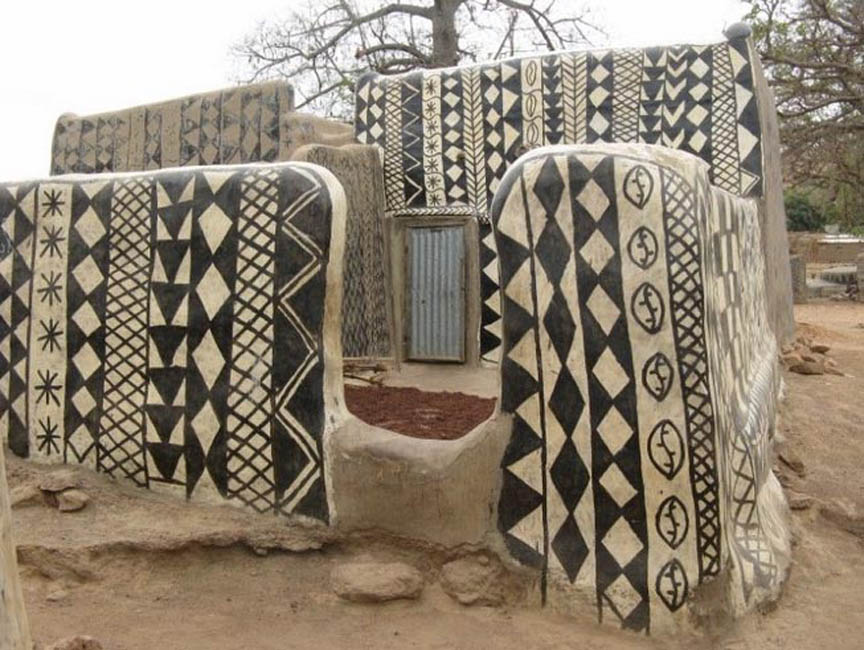
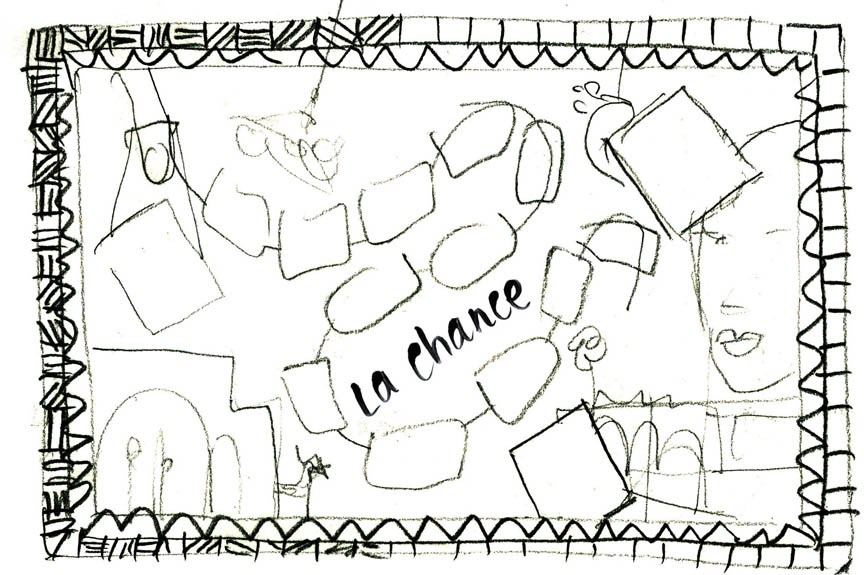
The (re)solve team evolved the sketch systematically and deliberately. Numerous conference calls with the designer and the project team in the US and in Burkina Faso led to discussions on everything from the girls’ posture, expressions, clothing, hair, and body language; placement of each illustration; and the architecture of the health clinic and “Aunty’s house” (a catch-all phrase for a relative’s house, where an unmarried girl might be sent to deliver her baby).
We wanted every element of the game to be instantly recognizable. Several photographs our team had taken with consent from girls during user testing inspired the illustrations of the girls. “I kept a life-size paper cut-out of the game board on my dining room table for over a month, where I could move around the elements for various needed revisions,” said Jamie Hogan, who designed the game. “There were many, many versions that led to the final.”
Two of those iterations are below:
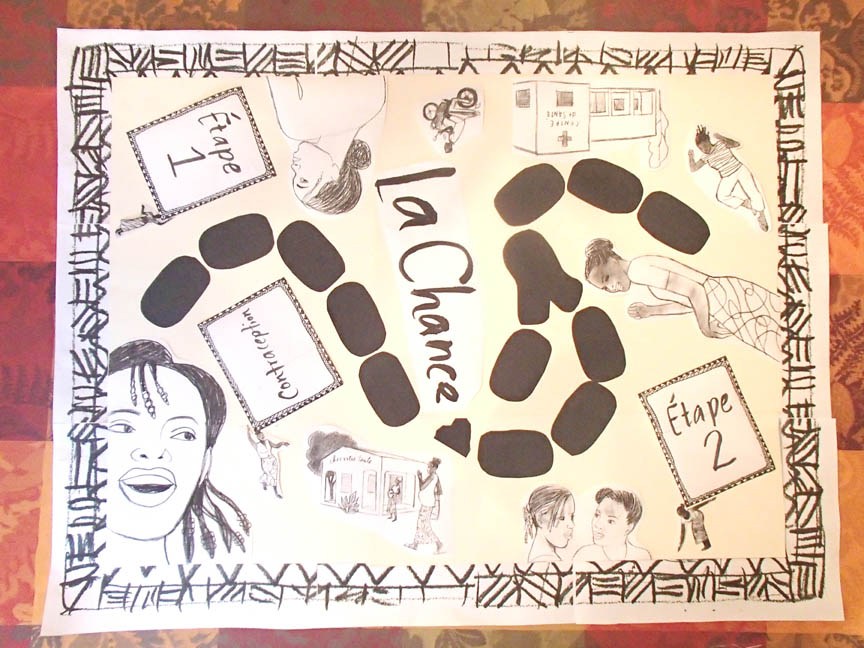
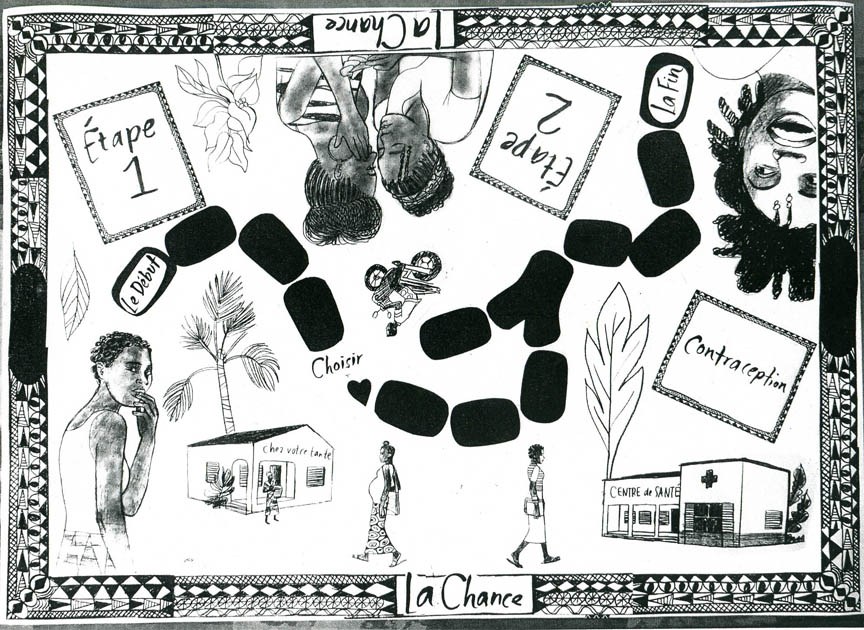
Next, the team went through iterations of color with the help of a graphic designer.
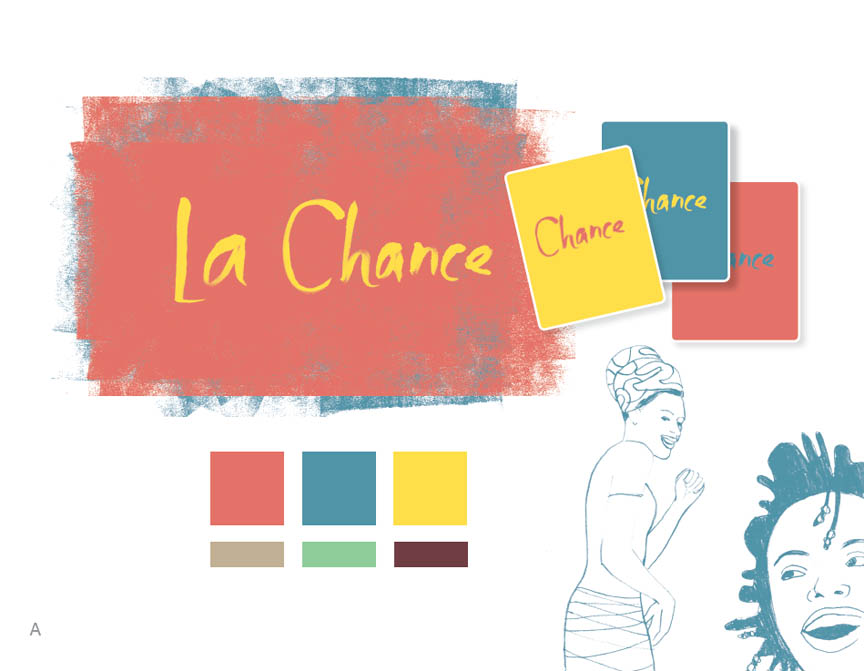
The designer worked with this palette to come up with different versions of the board game.
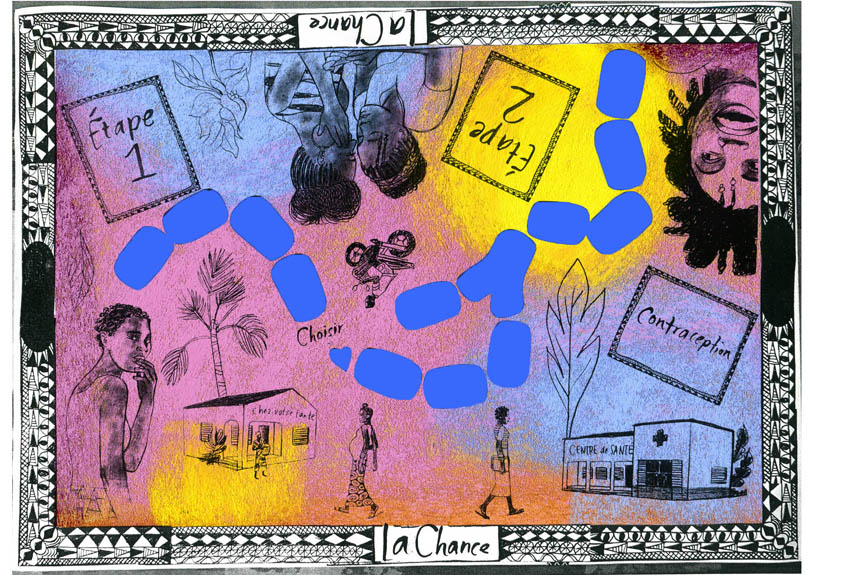
We were determined to create a portable, locally sourced product. Schoolgirls in Ouagadougou chose the final color palette. The selected color and design elements were incorporated in each solution element, including posters, IDs, passports, and the final board game. The game, its various parts, and all other solutions are produced locally.
The testing process
Multiple rounds of user feedback from schoolgirls informed the behavioral design process for the game and the numerous iterations that followed. The project team’s initial site visits by the project team to Bobo-Dioulasso, and discussions with the Pathfinder team in Burkina Faso and members of an advisory group that included representatives from the Ministry of Health and Ministry of Education afforded the opportunity to understand the feasibility of implementing the game in schools. We also played the board game with a group of young girls and teachers.
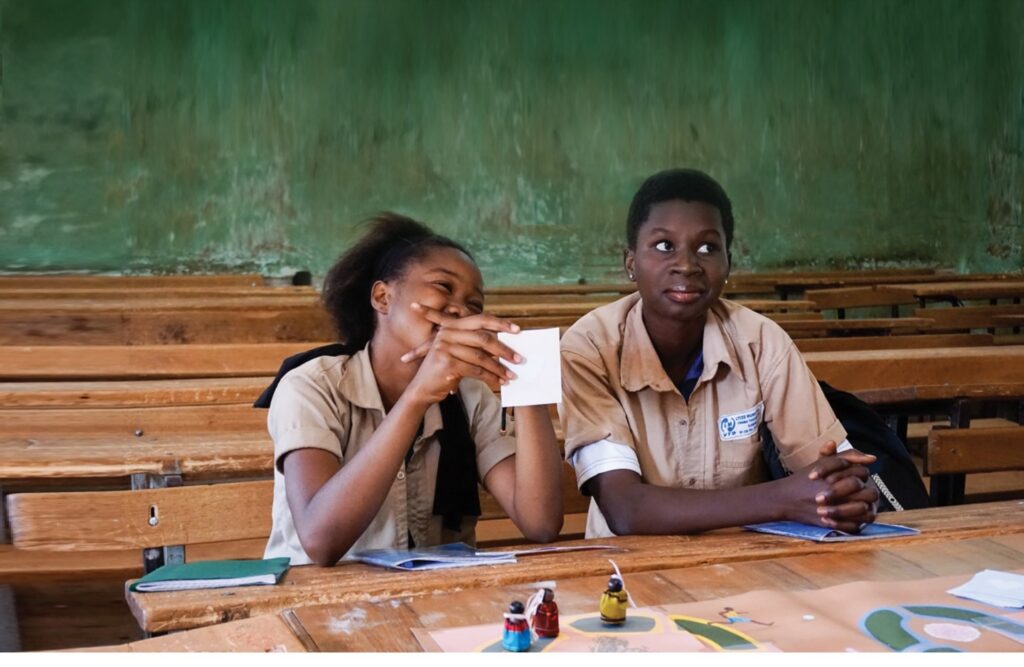
The second site visit gathered direct feedback from girls and health workers in response to the prototypes. To that end, we trained local community health workers over two half-day sessions to facilitate game play with girls so that games would closely simulate those played after testing was complete.
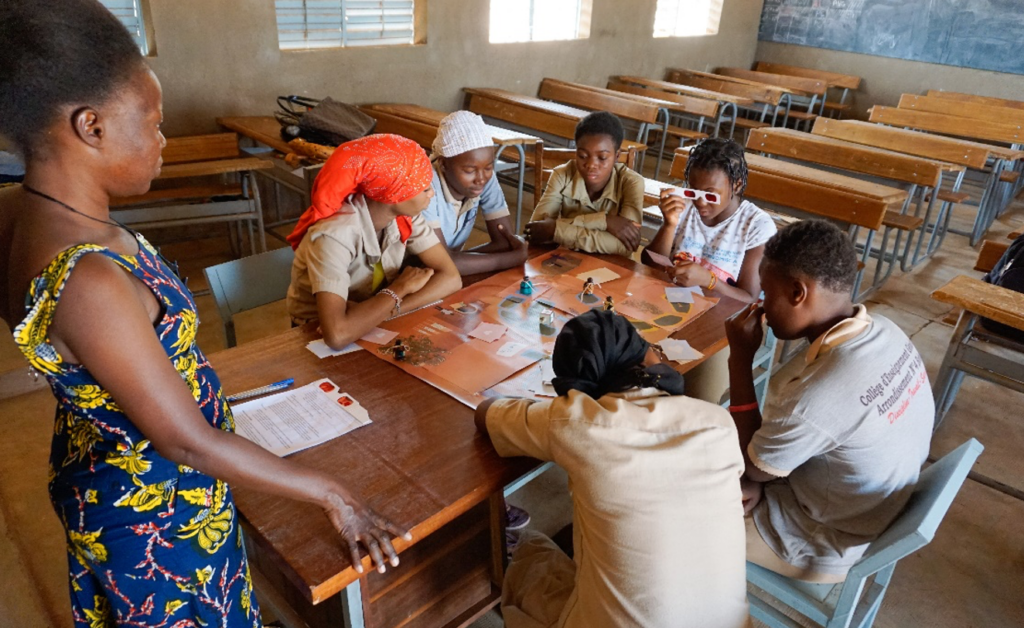
Throughout the process, (re)solve generated additional design ideas to prototype based on users’ suggestions. During testing and simulation of the game and poster, we observed whether the prototypes were understandable, useable, and desirable. Based on our conversations and observations, we iterated on the prototypes, making daily changes to content and format. We also consulted with game designers and behavioral economists, who have designed similar “games for good.”
The solution set
Solution 1: Board Game, La Chance
The finalized board game, La Chance, is played with three teams of two schoolgirls each from 3ème and 4ème (9th and 10th grades) in a classroom. The game is facilitated by a trained community health worker. After the game ends, the facilitator leads a brief discussion on what the girls learned and answers any questions they may have. The game helps adjust girls’ misperceptions of pregnancy risk, fertility, and contraceptives, and increases their comfort in having conversations about sensitive topics.
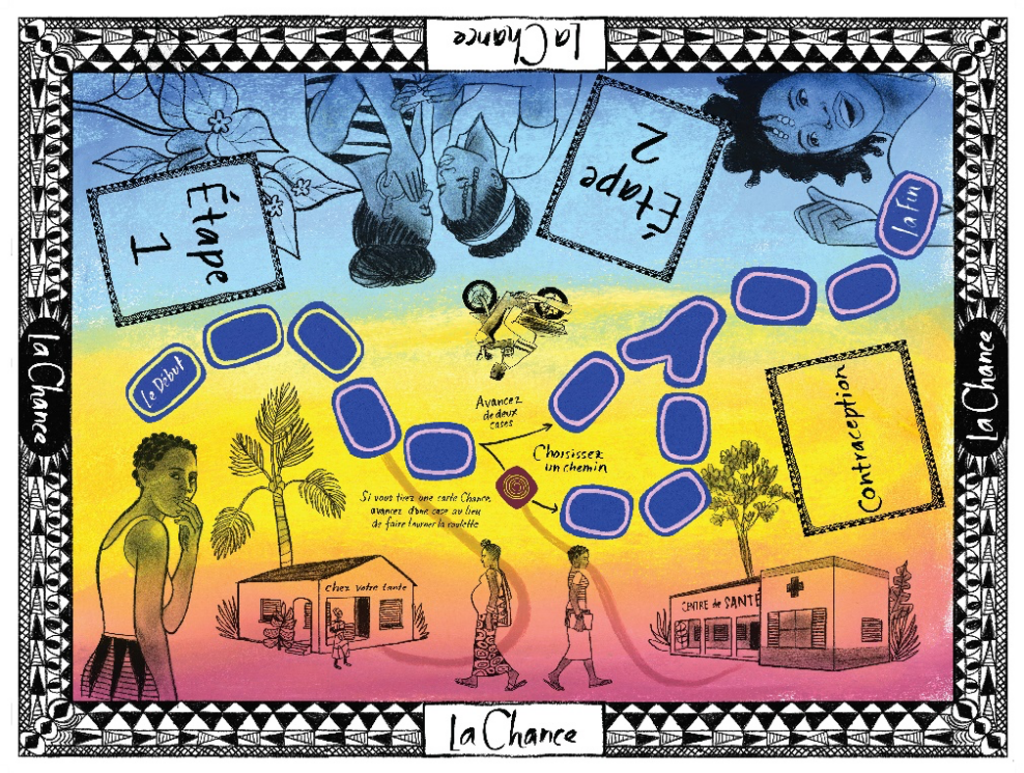
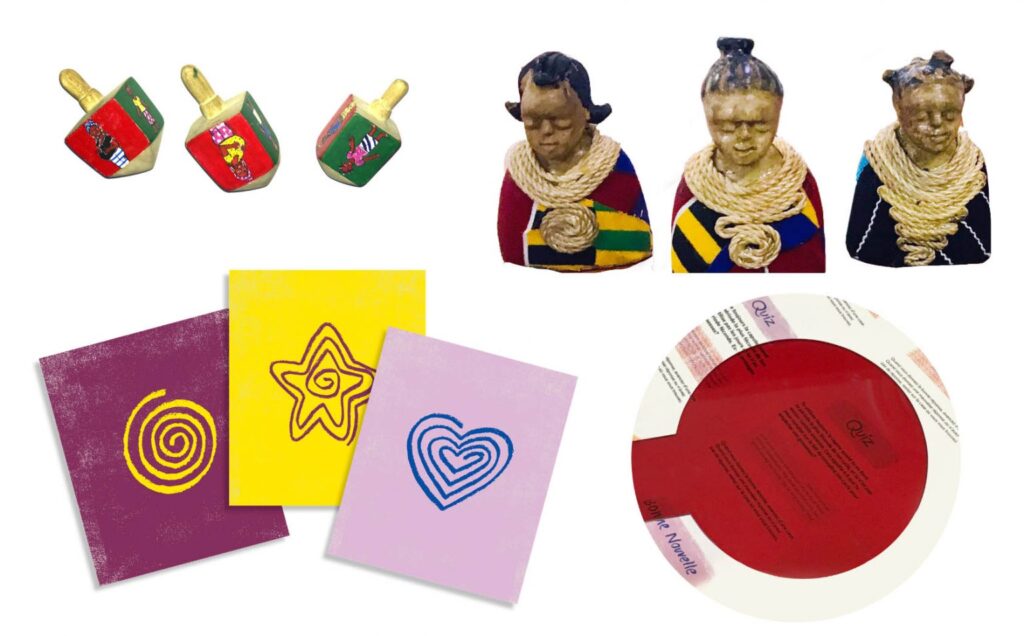
Solution 2: Health Passport, Posters, and IDs
The health facility passport is a small, rectangular card that girls receive after playing the game, which includes a list of health facilities in the area. The game’s facilitator tells girls to bring the passport to a health facility and ask a health worker any questions they have about contraceptives. Girls receive three copies of the health passport: one for themselves and two to give to friends or family members. The passport serves as a simple, visual reminder to go to the facility and can make a health facility visit feel special since each girl was one of few who received a passport.
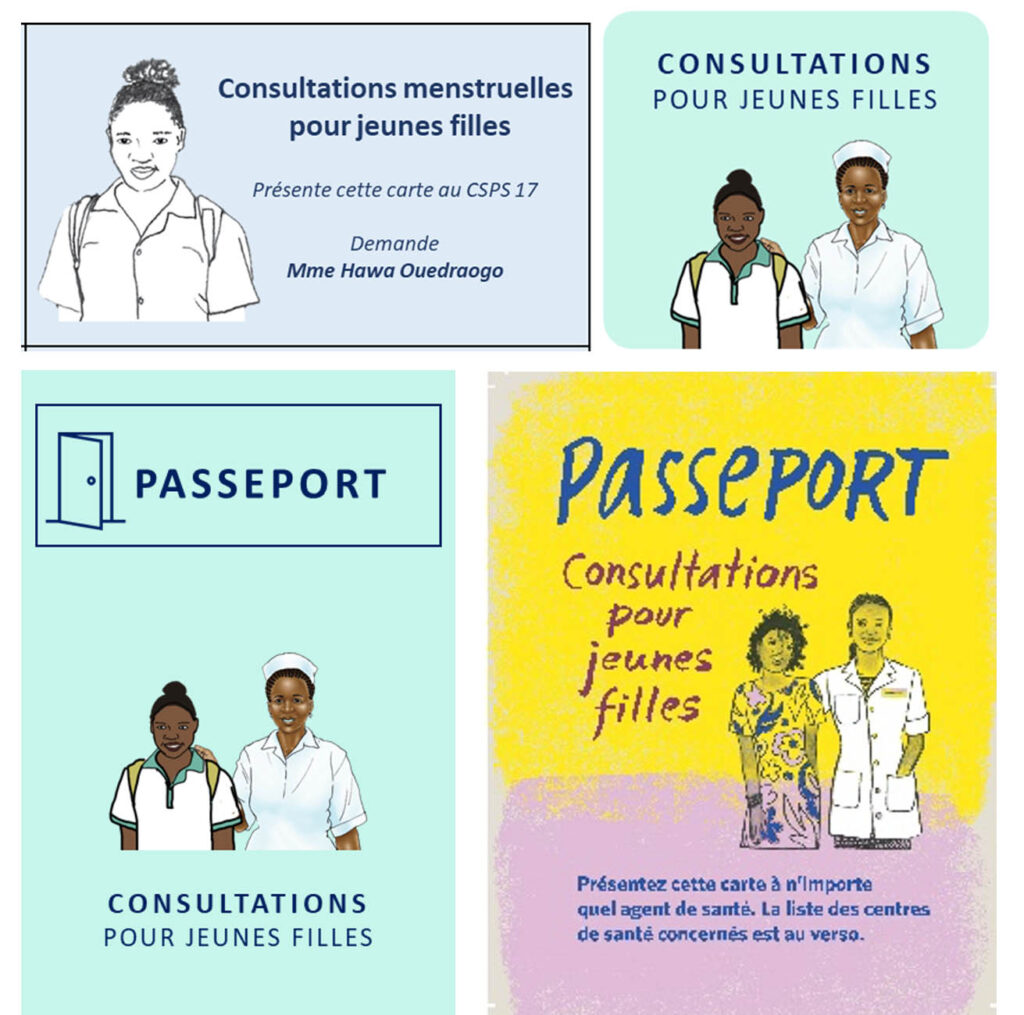
Game facilitators then instruct girls to look for the posters at the health facility if they are unsure of where to go. The posters advertise services other than contraceptives that young girls might seek in the maternity ward (e.g., counseling on puberty, painful periods, etc.). The presence of these posters destigmatizes a girl’s presence in a health facility and provides a plausible reason for her to be there.

Last, game facilitators tell girls that health workers will be wearing identifying nametags with a recognizable logo.
(re)solve and its solutions run deep. Recognizing that each element is critical, we took the time to ensure that each was well-received and effective. Each solution was designed to coordinate with the next – all tied together through color, font, and feel. Together, the solutions are pieces that form a whole set—giving girls numerous visual reminders and prompts intended to change their perceptions, attitudes, intentions, follow-up behaviors, and ultimately, encourage their use of counseling services at health facilities and contraception.
We firmly believe girls deserve science-backed, well-designed products that speak to them. (re)solve’s solutions in Burkina Faso deliver on this belief.
Special thanks to Jamie Hogan for her design work and allowing Pathfinder to share some of her early design content.
This blog is the second in a series about the (re)solve project. Read the first blog in the series: The (re)solve project: (re)imagining contraceptive services, for more background on the project design and outcomes.
